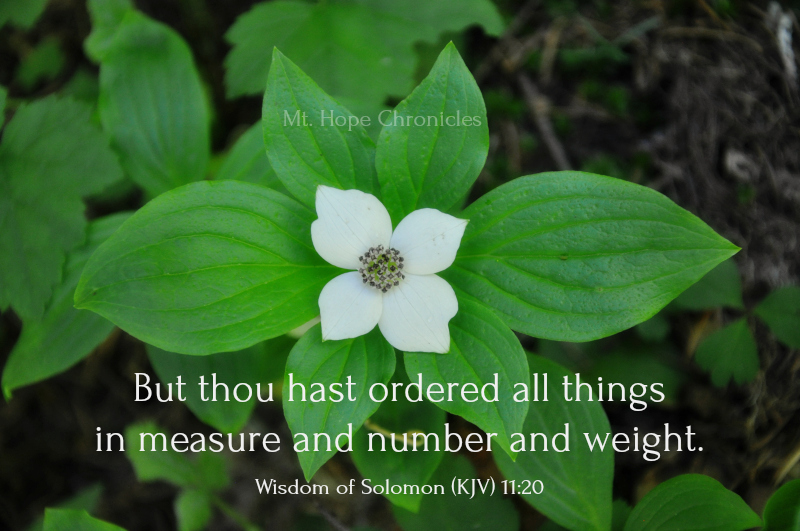
“Numbers are a map of the beautiful order of the universe, the plan by which the divine Architect transformed undifferentiated Chaos into orderly Cosmos.”
[Michael S. Schnieder, as quoted by Stratford Caldecott in Beauty for Truth’s Sake]
.
Let’s continue our discussion of Cosmos by exploring the ways in which it relates to math.
Order + Beauty = Cosmos
.
From Merriam-Webster, the definition of MATHEMATICS: the science of numbers and their operations, interrelations, combinations, generalizations, and abstractions and of space configurations and their structure, measurement, transformations, and generalizations. [Whew!]
Keith Devlin defines math as “the science of patterns.”
Another source defines math as the study of relationships using numbers.
The quadrivium consists of arithmetic (pure number), geometry (number in space), music (number in time), and astronomy (number in space and time) [Beauty for Truth’s Sake].
Our focus in Classical Conversations Essentials is arithmetic.
There are only are 3 (three!) basic things to learn in arithmetic. Everything else is just more complex combinations of these three categories:
Numbers (8), operations (6), and laws (4). That’s it!
This is our FORM!
Math in a nutshell: “There are digits, you do things with them, and they follow laws.” Leigh Bortins
.
Math as Language
Number symbols are like nouns. They represent things. There are many ways to represent numbers.
39% 4.75 5/6 -92 IV llll
Operation symbols are like verbs. They represent actions.
+ - x ÷
Grouping symbols make associations like punctuation.
( ) [ ] { }
Relation symbols make comparisons.
= < >
Placeholder symbols work like pronouns. They take the place of numbers.
X y a b ? __
.
My Personal Focus for the Year
** Learn and use math vocabulary in class so that students are better prepared for math conversations in Challenge. [Dividend, divisor, quotient, addend, sum, subtrahend, product, etc.]
Ask students to attend to details and name what they know in math equations.
.
Math Quotes
“[The universe] cannot be read until we have learned the language and become familiar with the characters in which it is written. It is written in mathematical language.” [Galileo Galilei]
“The world is God’s epistle written to mankind. It was written in mathematical letters.” [Plato]
“The laws of nature are but the mathematical thoughts of God.” [Euclid]
“Math teaches you to see what other people see. It teaches you to see what another author has written down. When we read, we don’t see the words ‘a’ or ‘the.’ Math makes you stop and say, I have to see the decimal, I have to see the exponent. Math is just good practice for being a human being who sees the world. Just think how an artist can see… shapes, colors. Our kids should see a math formula better, if someone would just show them. It is the same as artistic endeavors. If you can see the numbers, if you can see the operations, if you can see the laws, it will all change your ability to see complex ideas.” [Leigh Bortins]
“When I was a boy, we had to memorize the multiplication tables in the second grade, up to 12 x 12 = 144. Let’s set aside the fact that it takes a deal of intelligence and some ingenuity to accomplish that task. Forget that you would have to learn that anything multiplied by 5 ends in 5 or 0, alternately. Forget that if you were sharp you’d see that odd times odd is odd, and everything else is even. Forget the patterns showing up among the 2s, 4s, and 8s. Forget the nice progression in the 9s, with the tens digit gaining one and the ones digit dropping it: 09, 18, 27, and so forth. What that memorization did was to free you up to become comfortable with numbers themselves, and with the structure of arithmetic. Once you had done that, you could play with numbers creatively, long before you’d ever suspected the existence of algebra or calculus, with their toboggan curves and their infinite series and their radio waves, their transcendental numbers and the mysterious i, the square root of –1, whose existence we must leave to philosophers to determine.” [Anthony Esolen, Ten Ways to Destroy the Imagination of Your Child]
“The study of mathematics should instill in students an ever-increasing sense of wonder and awe at the profound way in which the world displays order, pattern, and relation. Mathematics is studied not because it is first useful and then beautiful, but because it reveals the beautiful order inherent in the cosmos.” [from The Education Plan of St. Jerome Classical School, Hyattsville, MD, quoted by Thomas Teloar in The Purpose of Mathematics in a Classical Education @ The Imaginative Conservative]

No comments:
Post a Comment